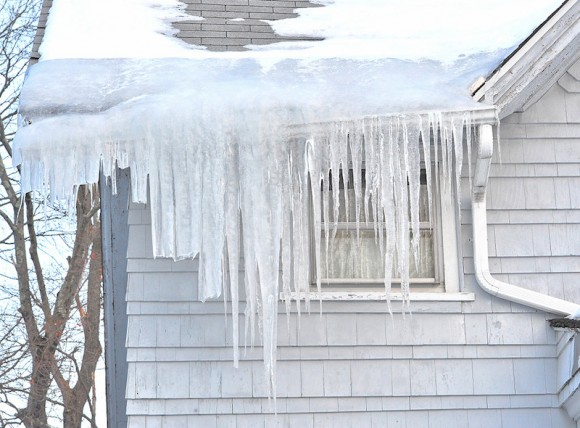
Ice dams form when water from melting snow refreezes at the eaves or gutters. Water can then pond above the ice dam and even leak into the building. This is almost always a sign that (1) the attic is not properly insulated, (2) the roof is not properly ventilated, and (3) if there is leakage, the membrane beneath the shingles is not working.
In an ideal situation, proper insulation does its work to keep heat inside the house, and the roof is merely a means to keep rain or snow out. If your attic is not a living space, lots of insulation between the ceiling below and the attic space ensures that very little heat gets up there. Proper ventilation of the attic space then ensures that the roof never gets warm enough to melt snow on top of it.
Even if the room directly beneath the roof is a living space, the same principles apply. In this case, it is much harder to install enough insulation, but there should be a space between the insulation and the roof’s inside sheathing so that cold air can flow from eave vents up through that space to carry away any heat that gets through the insulation.
Modern materials such as “snow and ice membrane” provide a very good seal beneath the shingles. If your roof is old, it may have tarpaper, which degrades and becomes brittle. If so, it may be time (this summer) to have your roof stripped down to the sheathing and to have lots of membrane and good flashing installed. It may be possible to have soffit vents and adequate roof ventilation installed at the same time.
But in the meantime, if you have ice dams, it is important to drain the pond above the dam. Unfortunately it is almost impossible to do this with heat or an ice pick. Here’s a suggestion of a good temporary fix: make “sausages” by filling a stocking or similar porous tube with either rock salt or calcium chloride crystals and lay this across the ice dam so that it melts a channel through the dam to drain the pond.
Good Luck!
Rick Holloway is a longtime member of the Chester Energy Team. Look up the E-Team on the www.chesterct.org town site or Facebook.com/ChesterCTEnergyTeam